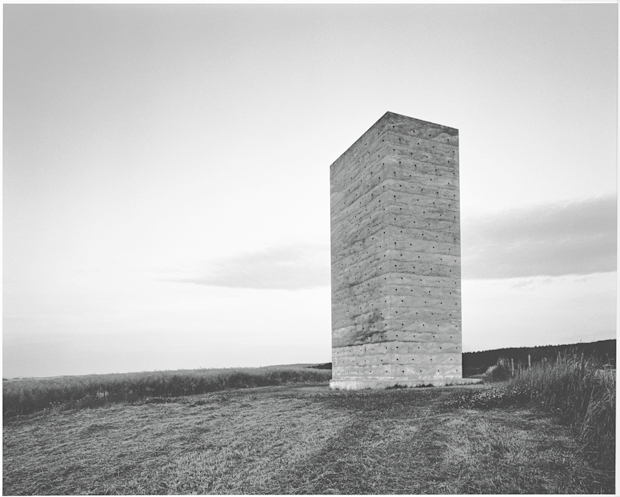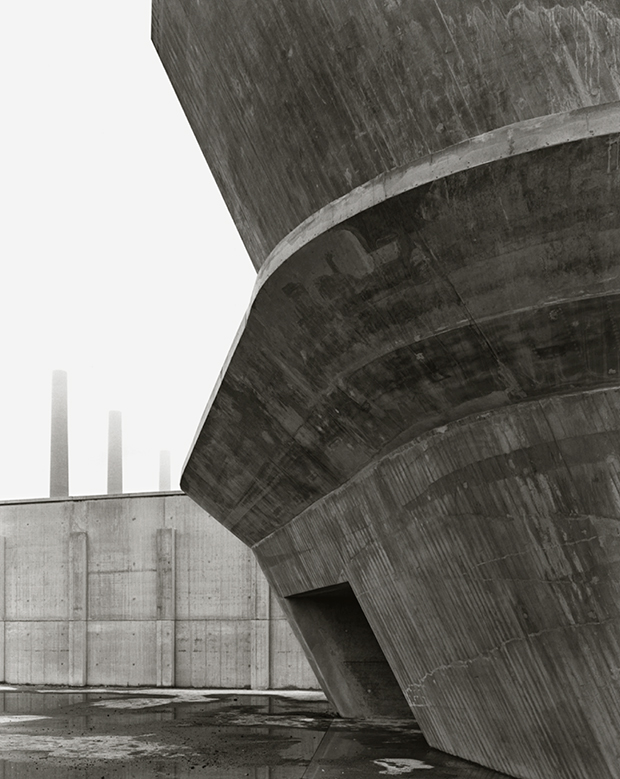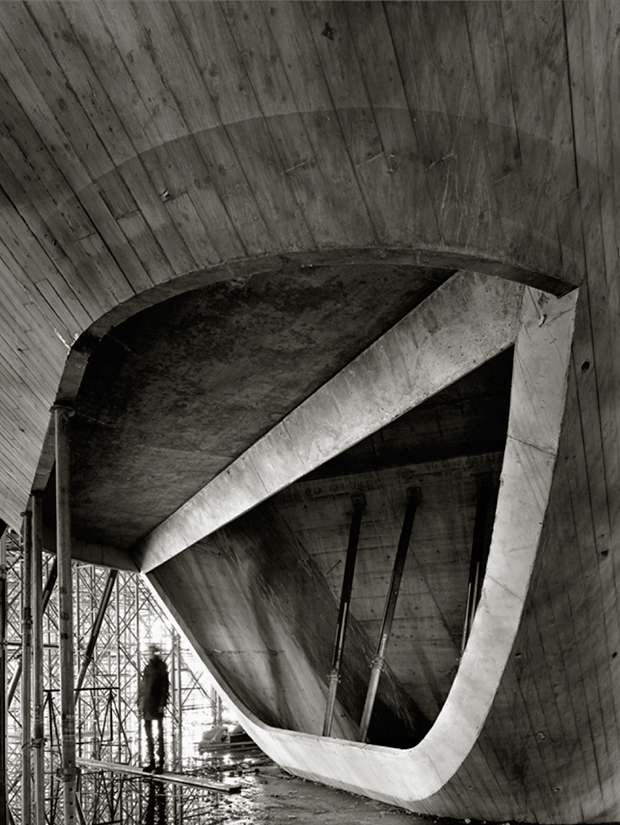
Hélène Binet on the importance of slowing time down
The Shooting Space photographer tells us about spotting unseen details in the darkroom
Hélène Binet started photographing contemporary and historical architecture in the 1980s. Shot only on film, her depictions of architecture as the meeting of light and shadow are influenced by the work of earlier photographers such as Lucien Hervé. While she has taken seminal images of buildings by Daniel Libeskind and Peter Zumthor, it is her ongoing relationship with Zaha Hadid that has perhaps most defined her practice. She has two photographs of Hadid's Phaeno Science Center in Wolfsburg, Germany in Shooting Space. Since first photographing Hadid's Vitra Fire Station nearing completion in 1992, it is common for her to document both the finished building and the project during construction to create a photographic narrative for the architecture.
"My interest in working sites is linked to an investigation of what is behind the extravagant forms and perfect lines of Hadid's architecture," she says. "It is an interest in the relation between the elegance of her gesture and her radical way of making a building." We caught up with her at the Constructing Worlds show at the Barbican in London and asked her a little about her attitude to her existing work. She began by talking about the need to stay open to all possibilities when shooting.
"Very often when you photograph a space there’s all this material that you get ready and then there’s often this moment where you have to be able to say Wow! and be open to surprise and not be locked into the concept you had.

"I think the early years of your career are very important years where you do things and they just spring from you. Later on in your career you bring things to a different level, things that were spontaneous when you were young. And later on you just keep working!
"Often, when you go back to work, you sometimes pick up a photo and think, ‘actually, I didn’t notice that before, but it’s really good.’ You realize there’s a whole other layer you didn’t see. And that’s a lovely moment. Especially when you’re printing, it’s very nice.
"I print a lot of work and it’s a very slow process. You go back to your negative and you discover new things. Time is so important and I think it’s good to slow it down." We wondered if she was still surprised in the dark room.
"Yes, well it’s a very important moment in creating the work again. That’s why I’m so keen on analogue. It's a moment when you make something and discover a part and you bring it out. Maybe when you’re photographing you do things slightly in a rush and then, after, you realize there’s something else."
We asked Hélène if, if she felt any kind of affinity with the way the other photographers at the Constructing Worlds show and in the Shooting Space book interpret architecture.

"Of course Lucien Hervé was for me a mentor, it’s wonderful work. What you get from the photos are that he was so controlled but so free. I wish I could become more free! You have to let go of your control and that can be beautiful. Then you can see in your photo a suggestion of something else."
Shooting Space, authored by curator and writer Elias Redstone, centres on the photographic response to contemporary architecture as seen through the lenses of Iwan Baan, Hélène Binet, Luisa Lambri, Hiroshi Sugimoto and Thomas Struth among others. You can find out more about the photographers in Shooting Space here. And if you're in London anytime soon, you'll find information about Constructing Worlds at the Barbican here.